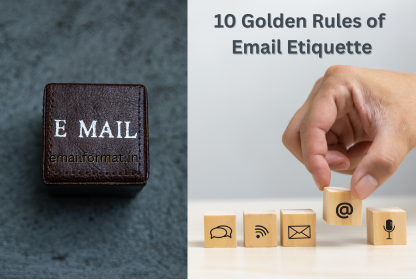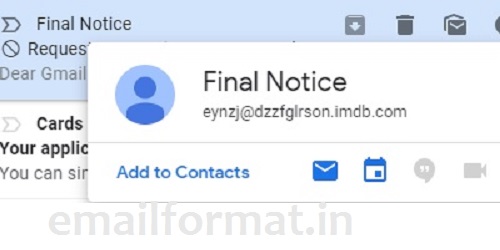1. Always Include a Clear Subject Line
A well-crafted subject line is your email's first impression. It should accurately summarize the content and purpose of your message in 5-8 words. For example, "Budget Approval Request for Q3 Campaign" is far more effective than "Important Document." Good subject lines help recipients prioritize emails and find them later. If your email requires action, indicate it ("Action Required: Project Sign-off by Friday"). Avoid vague or sensationalized subjects that might get overlooked or flagged as spam. Remember that mobile users often see only the first few words, so front-load the most important information.
2. Use Professional Greetings and Closings
Proper salutations set the tone for professional communication. Begin with "Dear [Name]" for formal emails or "Hello [Name]" for less formal ones. Avoid casual openings like "Hey" unless you have an established informal relationship. Similarly, use professional closings like "Best regards," "Sincerely," or "Thank you," followed by your full name. This formal structure demonstrates respect and professionalism. When emailing someone for the first time or someone more senior, err on the side of formality. As the relationship develops, you can adjust your tone accordingly, but always maintain professionalism in workplace communications.
3. Keep Messages Concise and Focused
Respect your recipient's time by keeping emails brief and to the point. Aim for 3-5 short paragraphs maximum. If you need to convey complex information, consider attaching a document instead. Use bullet points for multiple items or questions to improve readability. Start with your main point in the first sentence - don't bury important information. If your email covers multiple unrelated topics, consider sending separate messages. Busy professionals appreciate emails they can read and respond to quickly. Remember that long emails often get postponed or ignored, so focus on clarity and brevity while including all necessary details.
4. Maintain a Professional Tone
Workplace emails should maintain a courteous, professional tone regardless of the situation. Avoid slang, text abbreviations (LOL, BTW), and excessive emojis. Even in stressful situations, keep your language measured and polite. Read your email aloud before sending to ensure the tone is appropriate - written words can easily be misinterpreted without vocal cues. Be especially careful with humor or sarcasm, which often doesn't translate well in email. When addressing sensitive topics or conflicts, consider whether a phone call or face-to-face meeting might be more appropriate. Your email tone reflects your professionalism and can significantly impact workplace relationships.
5. Proofread Before Sending
Always review your email for spelling, grammar, and clarity before hitting send. Typos and errors can undermine your credibility and professionalism. Pay special attention to names, titles, and numbers which are particularly damaging when incorrect. Use spell check but don't rely on it completely - read the email carefully yourself. Check that all necessary attachments are included if referenced. Verify that you've selected the correct recipients, especially when discussing sensitive information. Taking just 60 seconds to proofread can prevent embarrassing mistakes and the need for follow-up correction emails. This simple habit demonstrates attention to detail and respect for your recipients.
6. Use CC and BCC Appropriately
The carbon copy (CC) function should be used thoughtfully - only include people who genuinely need to see the email. Overusing CC creates unnecessary inbox clutter. Blind carbon copy (BCC) is appropriate when protecting recipients' privacy in mass emails or when discreetly including someone. Before hitting "Reply All," consider whether everyone truly needs your response. When forwarding emails, clean up the thread by removing irrelevant content and summarize why you're forwarding it. These practices show respect for colleagues' time and inbox space while ensuring the right people have the information they need without overwhelming others.
7. Respond in a Timely Manner
Aim to respond to work emails within 24-48 hours, even if just to acknowledge receipt and indicate when you'll provide a full response. For urgent matters, reply as quickly as possible. If you need more time to address a complex query, send a brief response setting expectations ("I'll research this and get back to you by Friday"). Set up an out-of-office reply when you'll be unavailable for extended periods. Consistent response times demonstrate reliability and professionalism. However, avoid establishing unrealistic expectations by responding to non-urgent emails during evenings or weekends unless absolutely necessary.
8. Manage Attachments Carefully
When sending attachments, always mention them in the email body ("Please see attached report for review"). Use descriptive file names that include the document purpose and date (e.g., "2025-Q3-Sales-Projections.pdf"). For large files, consider sharing via cloud storage instead of attaching. Ensure all attachments are virus-free and in commonly used formats. When referencing multiple files, number them and explain each one's purpose. Before sending, double-check that you've attached all referenced documents - few things are more frustrating than receiving an email about an attachment that isn't there. These practices prevent confusion and save recipients time.
9. Handle Sensitive Information Securely
Exercise extreme caution when emailing confidential or sensitive information. Double-check recipients before sending, especially when discussing personnel matters, financial data, or proprietary information. Clearly mark confidential content in the subject line and consider password-protecting sensitive attachments (sending the password separately). Be aware of data protection regulations in your industry. Avoid discussing highly sensitive topics via email - sometimes a phone call or secure messaging platform is more appropriate. Remember that emails can be forwarded or accidentally sent to wrong recipients, so never include anything you wouldn't want made public. Protecting sensitive information is both ethical and often legally required.
10. Use a Professional Email Signature
A complete, professional email signature should include your full name, job title, company name, and direct contact information. Keep it concise (4-5 lines) and consistent across all communications. You may include a professional headshot and company logo if appropriate. Avoid inspirational quotes, excessive graphics, or personal information. For internal emails, a simpler signature may be suitable. Ensure your signature is mobile-friendly and appears correctly across devices. A well-designed signature provides necessary contact details while reinforcing your professional brand. It eliminates the need for recipients to search for how to contact you, making follow-up communication easier.




